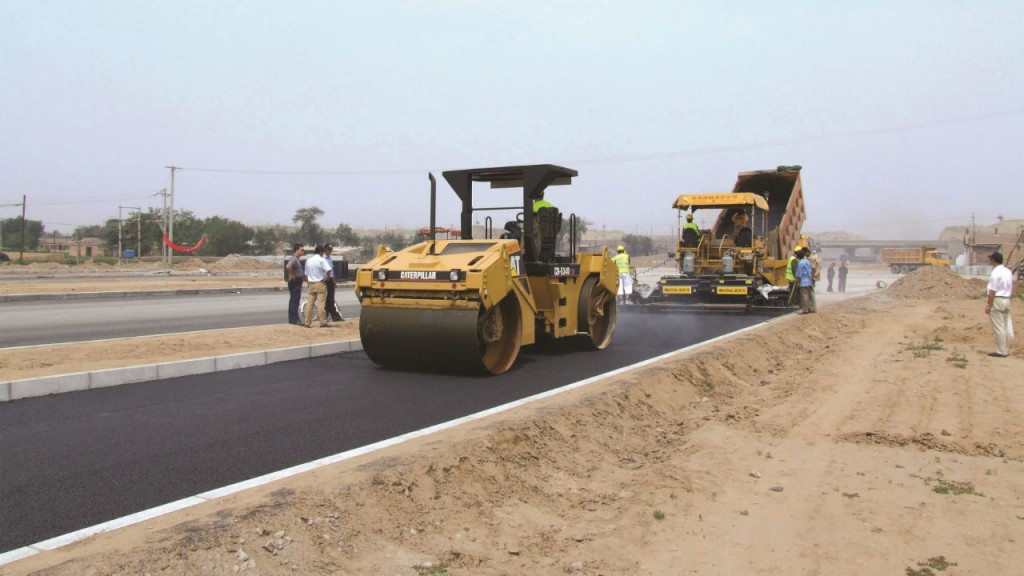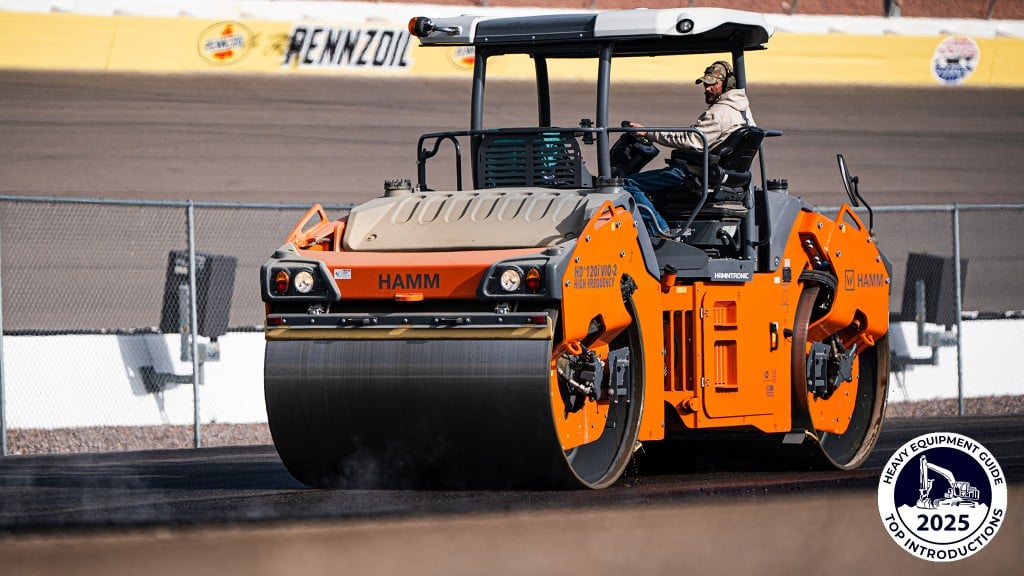How to achieve consistent asphalt density
Tips and techniques to improve operation of the paver and initial phase compactor and prevent density problems

Compaction issues can be caused by a range of factors. Poor drum system maintenance, lack of planning, incorrect equipment selection and inadequate operator training are just some of the factors that can cause problems during the compaction process. Some mixes are more difficult to lay down and compact than others and in those cases experimentation on the job may be the only solution when a mix is being used for the first time.
One particular problem to watch for is inconsistent density. Today, many public works departments require not only high asphalt layer density but also consistent density. Payment for a job may be associated with consistency measured across multiple core samples.
There is always a reason why density is variable. If you are troubleshooting this problem, look for variability in the paving process, mat temperature, rolling patterns and rolling speed.
Uniformity
One of the responsibilities of the paving crew is to present a uniform asphalt layer to the initial compactor. To the extent possible, the mat behind the paver should have 1) a uniform screed-laid density, 2) a uniform thickness, and 3) a uniform temperature.
Each compactor – especially the initial phase compactor – must follow a consistent approach to achieving consistently high density. The goal is to create 1) a uniform pattern, 2) a uniform compaction force, 3) a uniform working speed, and 4) a uniform temperature zone.
Pattern
Some operators have difficulty repeating the same pattern as they follow the paver. They do not always hit each portion of the mat the same number of times. Therefore, density checks made by the quality control technician will vary. When this happens, the quality control technician or supervisor must work with the operator of the compactor to define the pattern and make sure that the pattern is being
Speed
It is also important to verify that the paving speed has not changed. Often changes in paving speed are not communicated to the compaction team and the quality control team. For example, a rolling pattern that has been working well is suddenly causing the compactor to fall behind the paver and to be working in a lower temperature zone because the paving speed has increased. This can cause the operator to alter the rolling pattern to stay close to the paver.
Never change paving speed without doing two things: first, communicate the speed change to the compaction team; and second, verify that the initial phase compactor can keep up if the speed is being increased.
Tools to improve compaction
There are several types of equipment available to help operators maintain uniform rolling patterns, including a monitor, GPS and infrared temperature sensors.
The monitor in the operator’s compartment can be programmed to show the operator where the roller is located on the mat and how much of the pattern has been completed.
Global positioning systems provide very accurate maps of rolling patterns. The control can be programmed with the required number of passes. The screen will display different colours as the passes are completed. The operator no longer has to guess where the end of the pattern is in order to start reversing. There is also less chance that the operator will miss any of the areas in the pattern because the screen provides immediate feedback for quick corrective action.
Infrared temperature sensors are another option for some asphalt compactors. On Cat models, sensors are installed on the front and rear of the machine. The sensors are continually cleaned by compressed air that keeps dust, fumes and moisture away from the sensor’s lenses. The temperature systems are accurate and provide constant, visual reference on the display in the operator’s station. Not only does the operator know where the machine is located in relation to the defined rolling pattern, the operator knows where the machine is located relative to the desired temperature zone.
Stops
Large temperature variations are caused by long paver stops. The portion of the mat under the screed remains hot because it is confined while the portion of the mat just behind the screed loses heat because it is exposed to the air (see photos about "Stopping"). Heat loss depends on mat thickness, air temperature and wind speed. If the mat temperature varies by more than 15º C (30º F), there is likely to be significant density variation. To help promote uniform density, limit paver stops to no more than five minutes.
Varying mat thickness
In some instances, mat thickness varies across the width of the mat. The thinner portion will lose heat at a faster rate than the thicker portion. In the “Mat Thickness” photos, the shoulder was higher than the driving lane in this area of the project. The mat laid over the driving lane was the specified 50 mm (2 inches). The mat thickness diminished to around 25 mm (1 inch) over the shoulder. The density of the mat varied significantly due to temperature variation and also due to the thin mat having a low ratio of layer thickness to aggregate size. In this instance, all density checks taken in the shoulder failed to meet the minimum requirement, while all density checks taken in the driving lane passed the density requirement.
Company info
9401 – 85th Avenue North
Minneapolis, MN
US, 55445
Website:
cat.com/en_US/by-industry/paving.html



